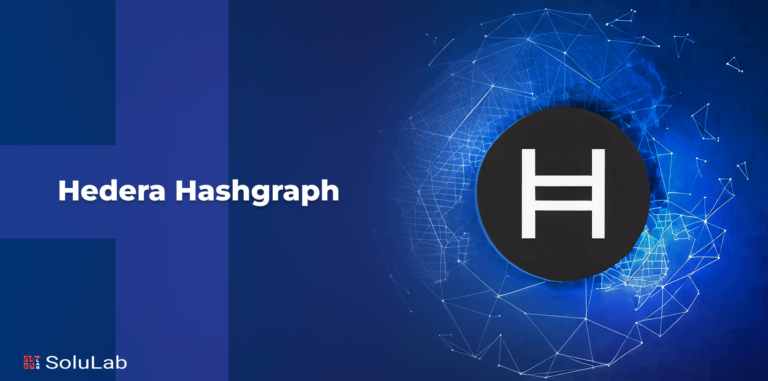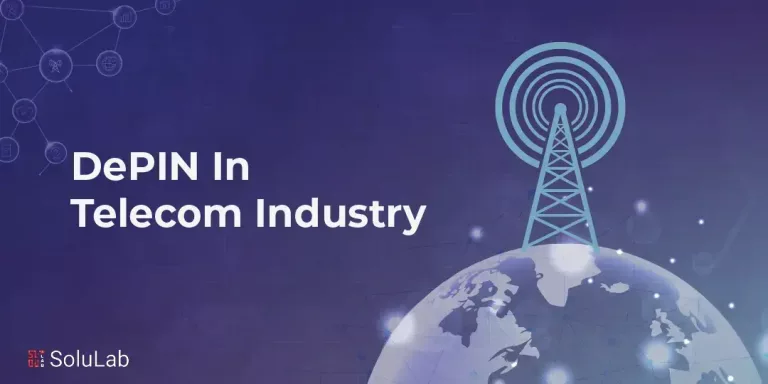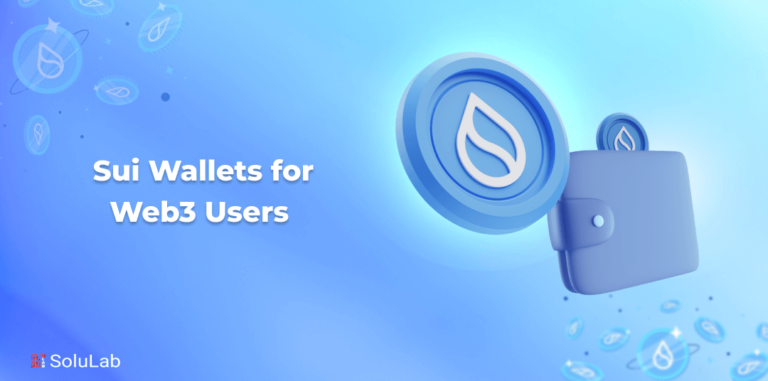A high-performanceblockchain ICO is a specially designed platform to bring about an improvement in all projects that make use of the structure of a blockchain. The new technology plays a major role in providing the appropriate solution to scalability problems and enhances the speed of bandwidth of transactions. The high performance blockchain or HPB allows the users to go for digital money and transfer the entire document flow of the world to the blockchain. Another specialty of HPB is that it comes with enhanced security and is superiorly quick due to the presence of the unique hardware accelerator. Here are the three major features that a High-performance blockchain ICO comes with.
- A TCP/IP Offload Engine or TOE hardware card is connected to the network.
- The revamped architecture of the block is launched, which is connected as a standard API.
- The new algorithm easily synchronizes with the old network and readily enhances its performance
Problems of Blockchain and Solution Offered by High-Performance Blockchain ICO
We know that the blockchain industry has been troubled with a low TPS or Transactions Per the Second obstruction. Anyone who has been familiar with the industry has in mind that when CryptoKitties obstructed Ethereum, the most popular smart contract platform to the point where it became almost unusable. The occurrence made several people understand that blockchain technology is quite far from a readiness for mass adoption.
Various projects on blockchain take different measures to deal with this low TPS problem. Some of them decided to enhance their performance by significantly reducing the number of nodes, whereas, on the other hand, some are trying to tackle the problem on a software level by the implementation of sharding. All these projects have one thing in common that all of them use conventional hardware which was not at all designed for running blockchain. It is precisely the area where high-performance blockchain differs.
High-performance blockchain or HPB is a product of HPB Foundation and Shanghai Zhaoxi Network Co., Ltd. Zhaoxi was founded in the year 2014 by Xiaoming Wang. It is an innovative blockchain technology research and development company with three offices in Shanghai, Beijing, and Singapore. The company has taken an extremely unique as well as innovative approach for dealing with the TPS obstruction for appropriately balancing the blockchain problem that is about how to be quick enough for enabling mass adoption of blockchain technology but without any kind of compromise in the security or decentralization.
High-performance blockchain or HPB comes with a permissionless blockchain architecture that appropriately blends customized open-source hardware that is the Blockchain Offload Engine or BOE with the software of High-Performance Blockchain. Following the example of how ASIC miners changed BTC mining, or how GPUs brought about a change in the gaming industry, we can certainly come to the conclusion that the creation of dedicated hardware is undoubtedly the most logical step to take for the entire blockchain industry. Even the speed of the internet was enormously increased due to the hardware advancements like ADSL or fiber optics. High-performance blockchain pioneered the birth of successfully designed as well as manufactured hardware that is dedicated to readily increase the transaction speed in blockchain technology.
Characteristics of High Performance Blockchain ICO
Now, let us have a deeper insight into the high-performance blockchain to understand the characteristics or features in detail.
Blockchain Offload Engine or BOE Hardware
The BOE or Blockchain Offload Engine comes with an in-built hardware random number generator for the purpose of keeping the transactions protected and enhancing security. Any kind of malicious occurring on the network would not only have to overcome the software, but also the hardware part of the network. The data in the blockchain is already very well protected, but the presence of this component brings about an additional layer of security to the high-performance blockchain.
The hardware random number generator considers different account variables like temperature or voltage at the time of generating random numbers. It means that the numbers are completely random which is much more secure as compared to the Pseudo-Random Number Generators or PSNGs software programs. These random numbers are able to produce number sequences that cannot be predicted with ease and hence the security provided is very tight when used for the purpose of encryption of data.
A part of the Blockchain Offload Engine is the Elliptic Curve Digital Signature Algorithm or ECDSA. It is a module that performs verification of signatures at a very high rate and is quite vital for the network to allow the processing of thousands of signatures per second. Other parts of the Blockchain Offload Engine are the MAC module and the TCP/IP Offload Engine or TOE. The MAC module handles the processing of data packets transferred from Ethernet cables and the TOE helps optimize throughout for high-speed Ethernet systems.
As can be understood from the name of the hardware, its functionality is to offload CPU load from the node servers. At the BOE Launch and Reveal event in the year 2018 in July, a live test was performed on two identical servers. One server was with the BOE hardware unit and the other without it. The server without the BOE unit took 40 seconds using 76% of CPU for processing 200,000 inspection data. On the other hand, the server with the BOE unit took only 8 seconds to process the same volume of data by the use of 5% of the CPU. This comes out to about the server with the BOE unit is five times quicker while using only a fraction of CPU, thereby clearly indicating the speed of transactions.
The use of BOE hardware comes with another major benefit. Many projects frequently make use of VPS services for hosting their nodes, thereby adding another layer of centralization. It is because sometimes too many nodes make use of the same VPS service. Now, if any VPS provider has some problems, then several nodes making use of the same would also have problems. Moreover, once the network reaches higher constant transactions per second, the nodes would require to rent more CPU, thereby resulting in the consumption of much more energy and hence involves much higher costs.
In this regard, the high-performance blockchain nodes are highly energy-efficient and incur lesser costs. It is because of the fact that the CPU load’s vast majority is performed by the BOE unit itself. In addition to this, all the high-performance blockchain nodes are obligated to use the BOE hardware. It means that they are not able to use VPS service and that plays a significant role in making the network more decentralized in nature. For the purpose of further optimizing the performance of the network, a high-performance blockchain ICO makes use of a dedicated HPB server network instead of a universal one.
The HPB MainNet was implemented in late September 2018 and is presently run by 118 nodes. It is because of the high-performance blockchain hardware that the network comes with the potential for achieving more than about 5000 transactions per second globally and about 10000 transactions per second in China where most of the nodes are located. This, in turn, plays a crucial role in making the high-performance blockchain quite faster as well as much more decentralized and secure as compared to several competitors that are run by just a fraction of the nodes than HPB along with wasting much more energy. In spite of the fact that the present transactions per second are already superb, the HPB development team has planned to enhance the performance sometime in the near future by a three-step approach listed below.
- Further enhancing parallel processing of transactions by the optimization of the organization of data in the transaction pool.
- Performing network protocol optimizations for the purpose of streamlining network traffic.
- Designing a new virtual machine that runs on the Blockchain Offload Engine.
Node System and Consensus Algorithm
The total number of nodes running on the HPB network is 150. Out of the 150 nodes, 31 of them are High-Performance Nodes and the remaining are Candidate Nodes. It is expected that the total number of nodes will be increasing to 300 in the time to come. Then, out of the 300 nodes, 61 of them would be High-Performance Nodes and the remaining would be Candidate nodes. The high-performance nodes help in proper synchronization as well as block generation. On the other hand, the Candidate Nodes help process transactions. The algorithm allows the nodes to rotate and any of the Candidate Nodes has the possibility to become a high-performing node at any time. Block rewards distribution is as follows.
- Two-thirds of the block rewards are allocated to high-performing nodes that help generate a new block and all the Candidate Nodes. For each of the blocks generated, the high-performing node responsible for generating blocks gets 35 percent of the block rewards and the remaining 65 percent is equally distributed among all other candidate nodes.
- One-third of the block rewards are allocated depending on the proportion of community votes that all Blockchain Offload Engine nodes obtain. Here the invitation nodes are left out from this reward.
Allocation of Node – 70 percent of the total allocation of nodes is decided by voting. 6 percent are run by the High-Performance Blockchain foundation and then the remaining 24 percent are issued by invitation.
Another important aspect that makes high performance blockchain ICO unique is that it adopts its own consensus algorithm that is the Proof of Performance. The consensus algorithm considers three key factors at the time of choosing a high-performance node –
- Network bandwidth with 50 percent weightage.
- Ranking of community voting with 35 percent weightage.
- A number of high-performance blockchain coins held with 15 percent weightage.
In this way, all the nodes are incentivized in the highest possible manner so that they can provide maximum performance to the network. High-performance blockchain ICO adopts an inflationary system where the present rate of inflation is capped at 3% of the initial token supply. Once another 150 nodes are added, the rate of inflation will increase to 6% of the initial token supply. Capping the maximum inflation rate to the initial token supply means that the actual inflation will be decreasing every year. For facilitating the adoption and economic incentives, the team of HPB decided that for the first year of inflation, an equal amount of HPB will be burned from the reserve fund. It means that in the first year of HPB, inflation would be zero percent.
Superior Flexibility
Another important aspect of high performance blockchain ICO is that it is highly flexible in nature. It is similar to Ethereum in many ways. The source code of HPB has about 80 to 90 percent similarity. It adopted a similar gas/fee system like Ethereum. Ethereum is open-source software and any software solution adopted by Ethereum would not be very difficult to implement on HPB software along with minor changes as per requirements. It would also be easy for ETH dapps to be migrated to HPB whenever they want higher performance.
HPB is an open-source permissionless blockchain and hence anyone can freely take part in the network to deploy smart contracts. But high performance blockchain ICO does not have its own dedicated language, unlike Ethereum. HPB supports smart contract systems for facilitating hassle-free integration of the existing developer ecosystem. Blockchain’s base layer provides a series of blockchain data access as well as interaction interfaces with the use of JSON-RPC & RESTful API for the purpose of supporting different data applications and development languages. Developers can make use of any major programming languages like Java, JavaScript, .NET, Python, C+, and others. At present, developers can use only Java while the other languages are being worked on by the HPB team.
High performance blockchain ICO supports the mechanism of General Virtual Machine or GVM. Now, the GVM also supports code from other blockchains, thereby allowing much greater flexibility. At present, NEO VM and Ethereum VM are supported. But HPB has the potential to add new VMs as required with its modular design. It means that the dapps on NEO or ETH can easily interact with HPB in cases where high performance is required.
Another interesting aspect of high performance blockchain is that it supports sidechains. It means that core technological updates, software updates or both can be tested on a sidechain before being released to the public. Moreover, HPB is also offering BaaS or Blockchain as a Service providing end-to-end solutions as well as consulting for enterprises wanting to make the most use of blockchain technology for their businesses.
Conclusion
HPB usually takes a very broad as well as a holistic approach towards the blockchain industry. The team of HPB identifies that different entities have different requirements. A game developer has different requirements as compared to a financial institution. A game developer might enjoy developing a game on a public network but a financial institution might not be willing to store all their data on a public ledger. High-performance blockchain ICO comes to the rescue in this situation by taking a hybrid approach. It works as a public blockchain platform where anyone can come and build their dapps.
On the other hand, they can also reach developers who want more freedom in terms of their consensus algorithm, privacy, etc. via their BaaS offering and side chains. This, in turn, allows high-performance blockchain to create a huge ecosystem with an array of entities that can easily and safely interact as well as exchange data between each other. Use cases of high-performance blockchain are simply endless which gives a clear indication about the potential it has that can be explored in the time to come.




